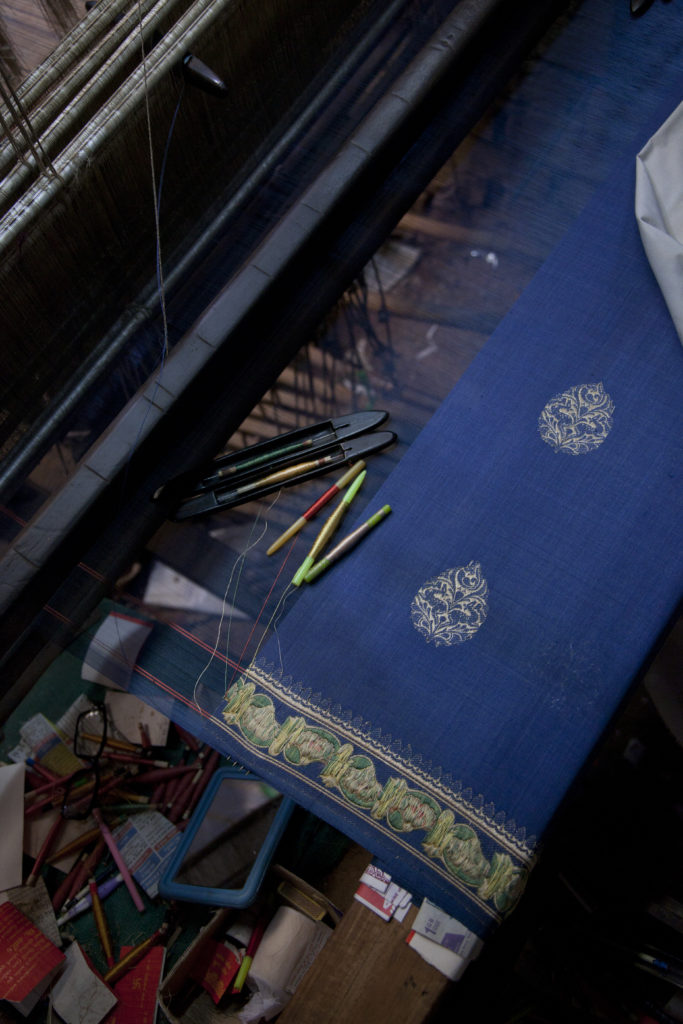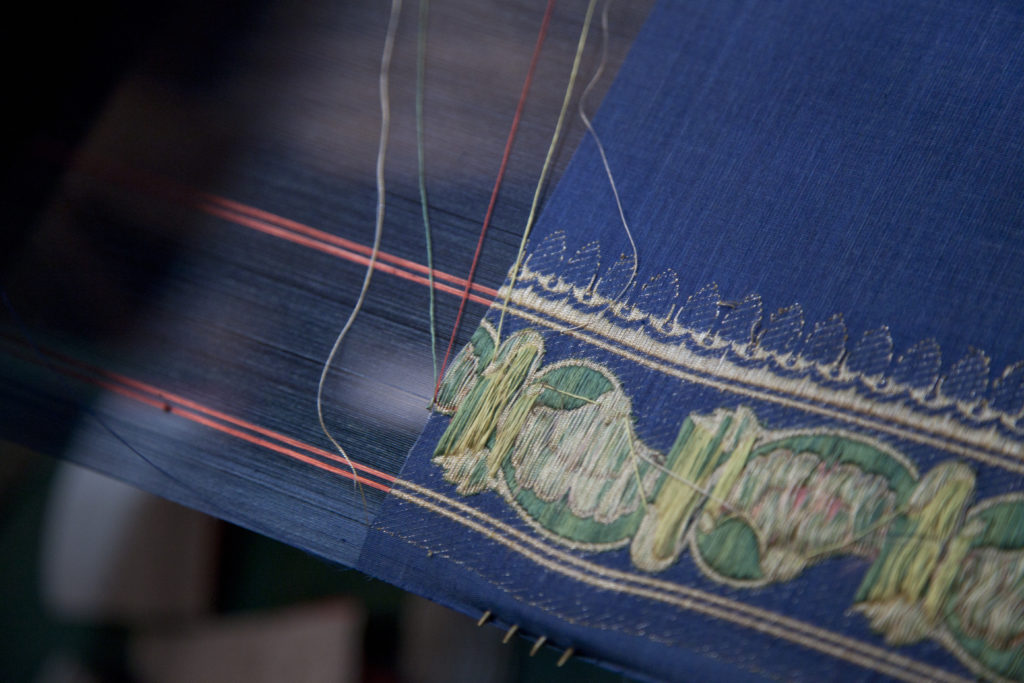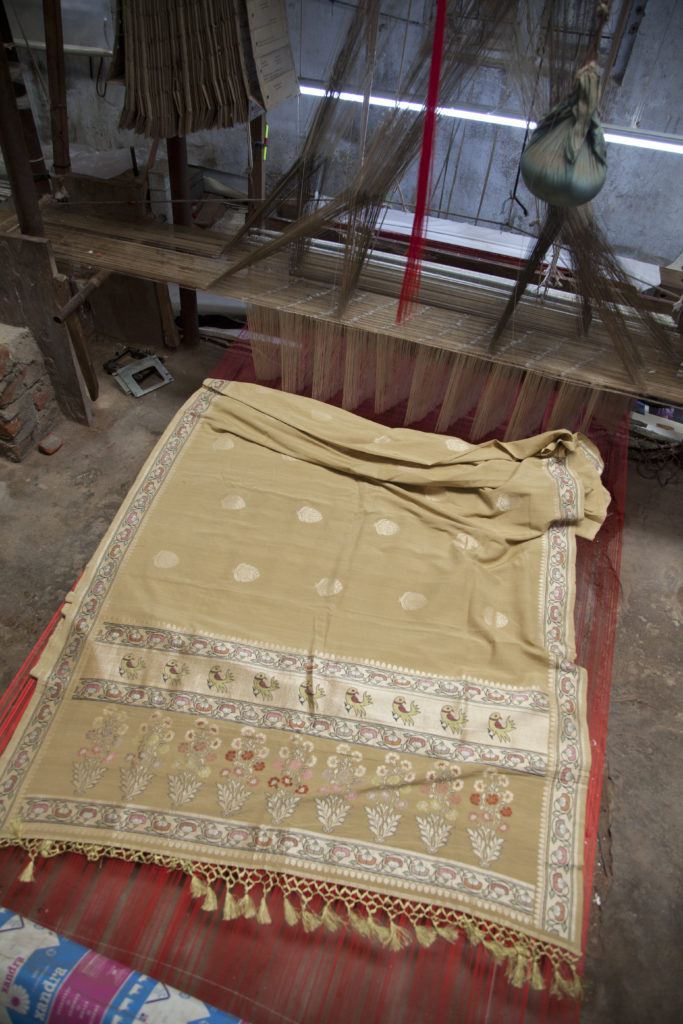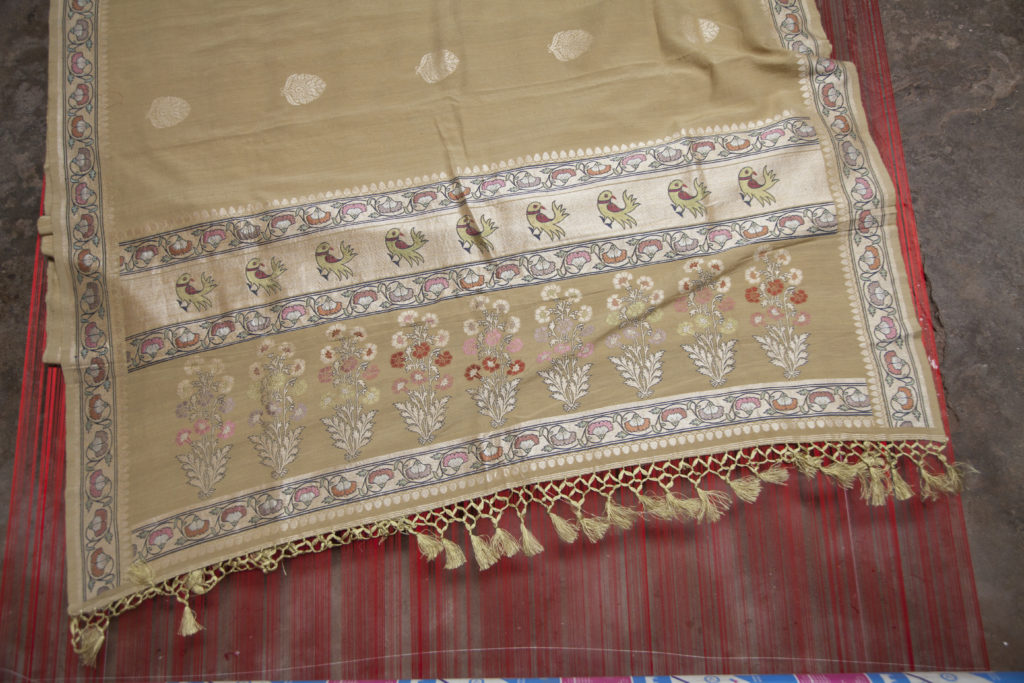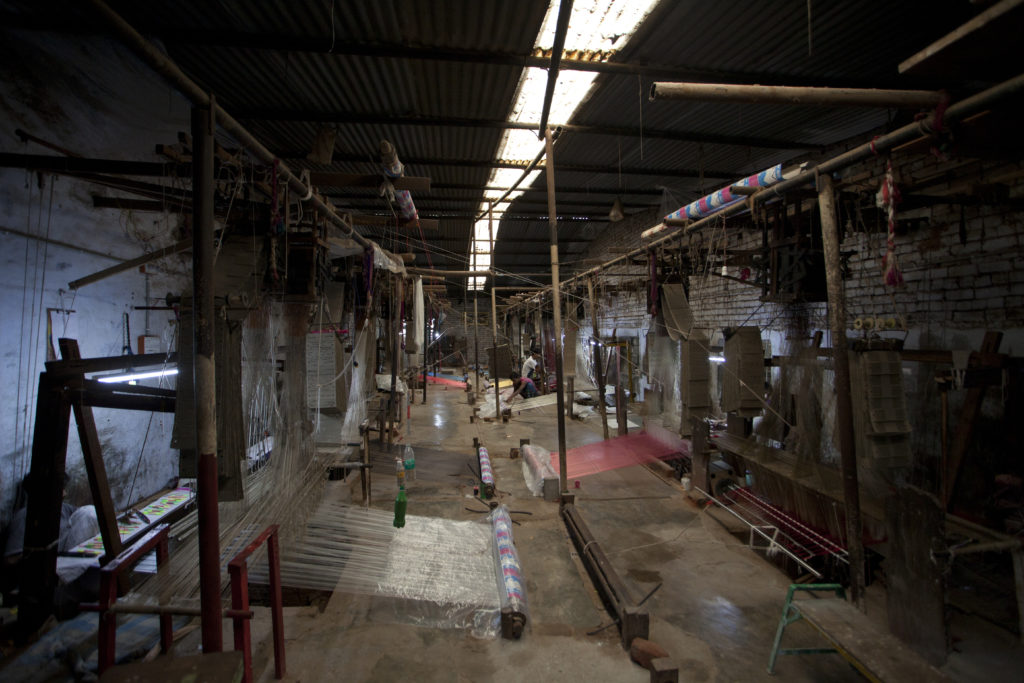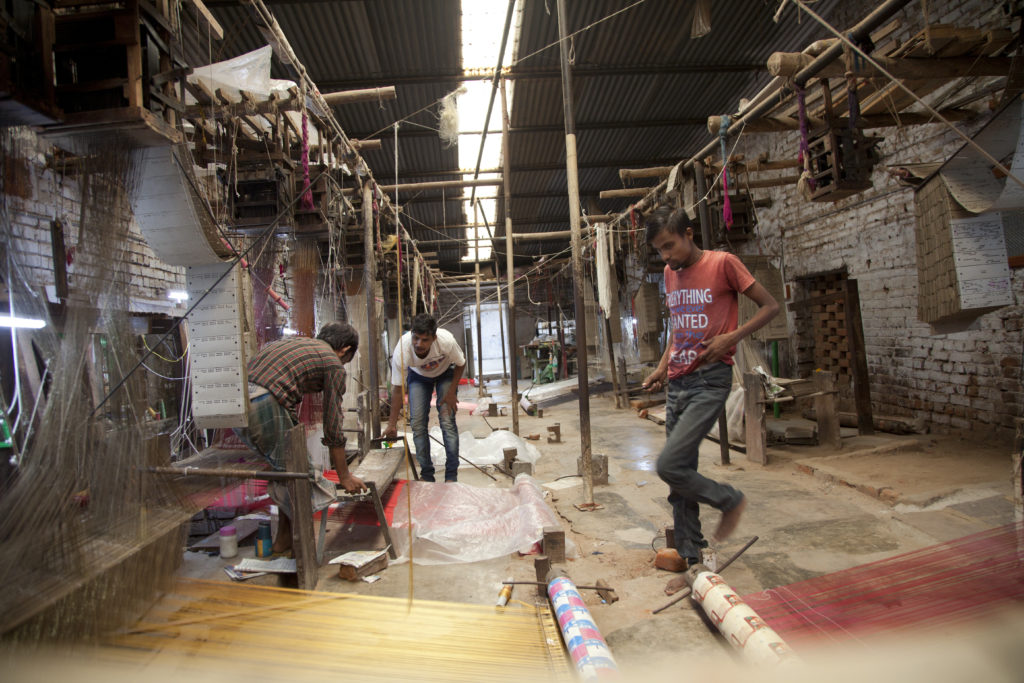- Ashavali is a brocade weave. The work however is called meenakari.
- By some accounts, weavers from Ashavali moved to Benaras to create the now-famous Benarasi brocades.
- Ashavali’s motifs are floral and rich in colour. They resemble a Paithani.
- Ahmedabad once used to be called Ashavali.
- To this day, Gujarati women prize an Ashavali saree.
- Ashavali brocades are called khinkhabs.
- The name Ashavali comes from Ashapalli, which was named after a Bhil king called Asha Bhil.
- Weaving here goes back to the 8th century.
- Motifs were drawing from the Mughal aesthetic.
- Common motifs were paisley, birds, flowering vines, animals and humans.
- The motifs were made with bright, enamelled contrast colours and called minakari work.
- The motifs appear to float on the saree because they are woven using the alternating twill technique.
Structure of the Saree
Traditionally the sari was woven on a 105 cm wide pit loom. It had a main field, side border, a pallu (end-piece) comprising of a minor panel, a major panel and a cross border.
Field of the sari begin after the cross border.
The side borders had metallic weft that does not run from selvedge to selvedge.
One side border was woven up to the length where the sari is wrapped around the waist.
The end-piece and cross borders were woven in two-layer structure.
1/3 twill weave front was combined with a separable plain weave back.
These surfaces were further calendered to lay emphasis on the smoothness and thinness.
Borders were woven on narrow looms using the extra warp or extra weft.
The border was 2-4 inches wide. Zari was used as extra warp/ extra weft.
The Rabari and Bharward communities of Kutch and Surendranagar wore brocaded pallus and borders.
Patels, Kanbis and other communities traditionally used borders.
End-piece of the sari, locally called as pallu, was woven using extra weft technique.
The mechanism used for weaving the pallu was similar to that of Mashru weaving.
Females of Rabari community in Surendranagar attached this pallu to the odhani.
Rabari communities in Saurashtra stitched these pallus with maroon colored odhanis.
Kinkhab was woven on a draw loom using the jala technology, with metallic yarns as extra weft, continuous from selvage to selvage on a silk warp and weft base.
Source: Ashavali brocades from traditional to modern times


